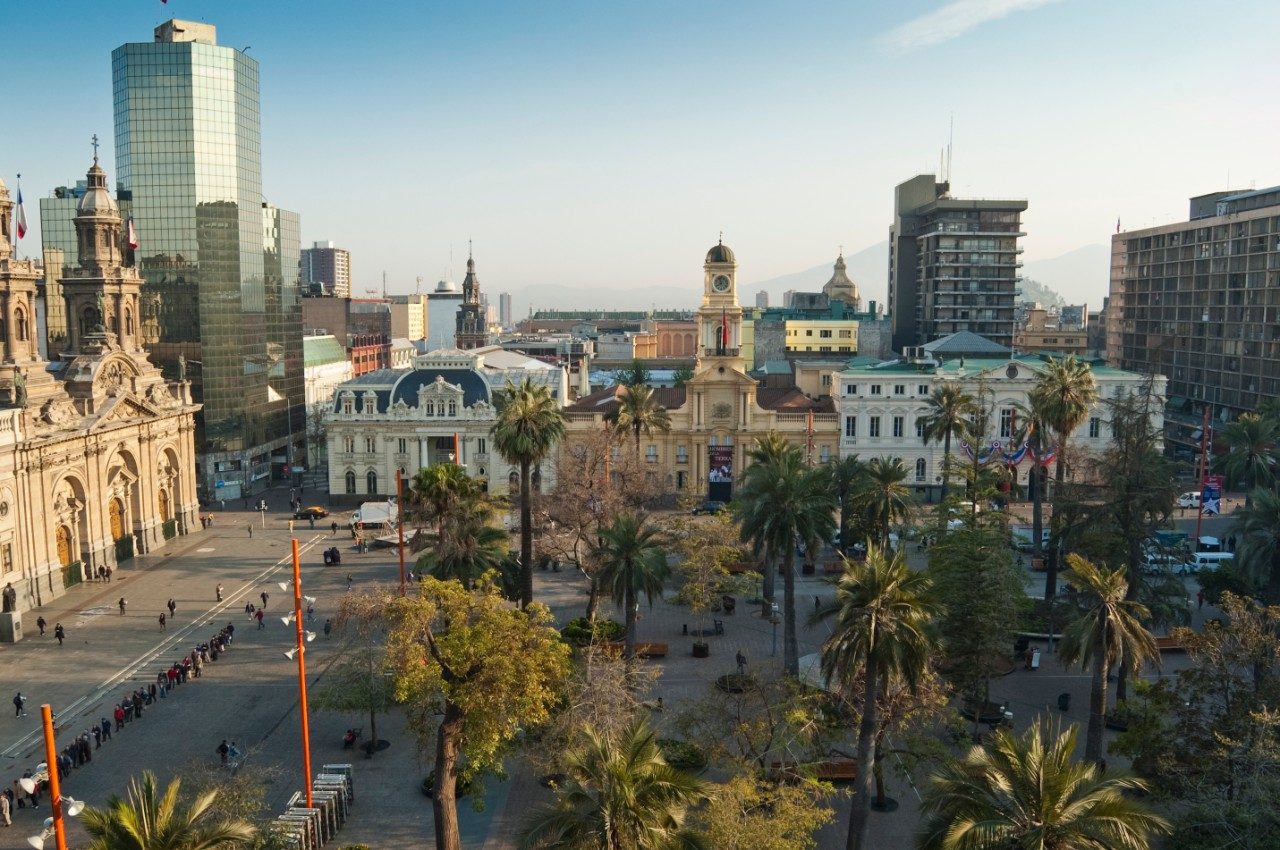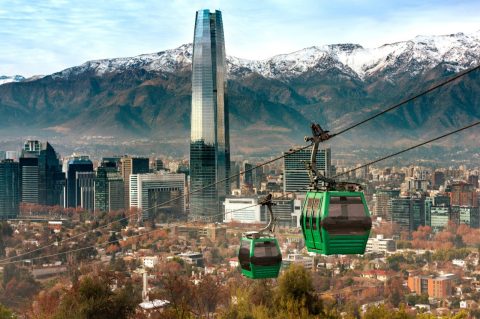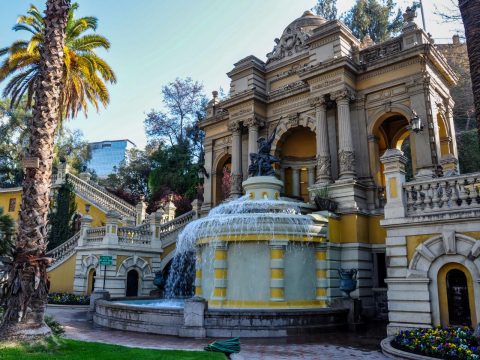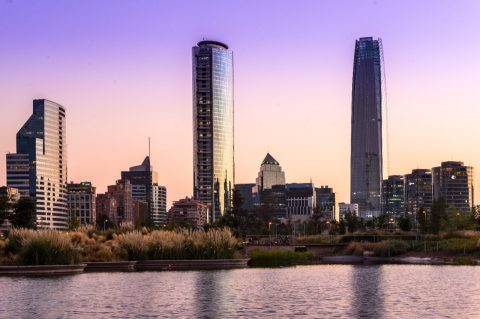Read Before You Leave – Santiago

Chile’s capital is your gateway to exploring the splendour of South America. It’s clean, modern and efficient, but often overlooked for nearby capitals such as grand Buenos Aires in Argentina and Brazil's lively Rio de Janeiro – all easily reached on LATAM codeshare services. Thanks the city's efforts in preserving and repairing historic architecture, creating green spaces and improving public transport – Santiago has emerged from the shadows as a prosperous, attractive capital with world-class food and wine and reinvigorated barrios. Here’s what to know before you go.
Flight time to Santiago
Qantas flies directly to Santiago from Sydney and Melbourne. The flight takes approximately 12 hours and 20 minutes.
Entering Chile
Australians require a visa to enter Chile which will allow you to travel for up to 90 days for business, family and leisure purposes – it's important to apply well in advance of your trip, as applications will not be accepted within 65 days of departure. As with any destination, it’s important not to overstay your welcome in Chile; if you do, you may have to pay a fine or encounter other legal challenges.
If travelling with children under 18 years, parents may be required to show an original birth certificate and/or a court-order conferring custody (if sole custody of a child has been obtained).
Landing at Arturo Merino Benítez Airport
Santiago’s airport is located 15 kilometres northwest of downtown. The easiest way to get to town is to take a bus – Buses Centropuerto and Turbus both operate services that depart from outside the arrivals hall and take approximately 45 minutes to get to town. If you do want to get a taxi, ignore the drivers waiting beyond the baggage claim – they’re known to overcharge tourists. Book a fixed-rate taxi (the blue, as opposed to the black and yellow metered taxis) online ahead of your arrival or head to a counter within the baggage claim area and prepay the fare.
Legalities in Santiago
Penalties for possession, use or trafficking of illegal drugs in Chile are severe and can involve lengthy imprisonment.
Language in Santiago
Chilean Spanish has an extensive catalogue of slang and in this way, differs from other South American dialects. It could take some getting used to, even if you’re a confident Spanish-speaker. It pays to learn a few phrases in the local tongue.
Medical advice
- Make sure your basic vaccinations are up to date. Visit Travel Doctor for more information.
- Smart Traveller advises that medical facilities in Santiago are of a high standard, but may be limited outside the capital. Treatment at private hospitals can be expensive and payment is often required up-front before care has been provided.
- Air quality in Santiago is often polluted, thanks to a combination of diesel exhaust, fossil fuelled power stations and thermal inversion, a phenomenon that occurs during winter and causes air pollution and smog to be trapped in the Central Valley in which Santiago is located. The government regularly issues alerts for air contamination, especially between April and October. Smart Traveller advises travellers with respiratory issues to take extra care when warnings are issued.

Santiago transport tips
- The Metro de Santiago subway extends for more than 103 kilometres over 108 stations with more under construction. Buy a BIP card (1550 Chilean pesos) at a metro station and recharge as you go. The card works for both the subway and public buses.
- Taxis are plentiful. They’re generally black with yellow roofs and should always be metered and have an orange number plate.
- Rideshare apps have reached Santiago, too — Uber and Didi currently operate in the area.
Money in Santiago
- At the time of writing, the Australian dollar is buying 582.96 Chilean pesos (CLP). Check a reliable currency conversion service for up-to-date exchange rates.
- Make sure your bank won’t hit you with extra fees when you use your credit card in Santiago. Your Australian bank and Chilean ATMs will both charge you for withdrawing money from your debit card, too, so it might be worth organising a travel card with low or no fees to use while you’re away. In any case, inform your bank of your travel plans, lest overseas purchases are misconstrued as fraud and your card is cancelled.
- Credit and debit cards are widely accepted but some businesses will charge a two to four per cent service fee. Carry smaller cash denominations for shopping in corner shops and paying for cabs.
- It’s customary to tip in restaurants in Chile – about 10 per cent. Tipping taxi drivers isn’t necessary but you can round up. In hotels, it’s good etiquette to leave a small tip for room maids, porters and the concierge.
Etiquette in Santiago
- Chile is a mostly Catholic country and relatively conservative – divorce was only legalised in 2004 and although same sex marriage was legalised in 2021, homosexuality is still taboo for many.
- Keep your hands visible when dining – rest your wrists on the table when you’re not eating.
- Refer to men and women whose names you are unfamiliar with as señor and señora.
- Haggling isn’t common so instead of bartering, shop around for a price you’re happy with.
Weather in Santiago
Santiago has a mild, Mediterranean-esque climate year-round. In the summer season (November to March), temperatures can reach highs of 30+ degrees celsius; in the winter (June to August) the temperature reaches highs of around 14 degrees celsius and lows of zero and it’s often rainy.
When to go to Santiago
Santiago is lovely during the spring (September to November) and autumn (March to May) when the sun shines, the tourists are fewer and the smog is kept at bay.
Dress code in Santiago
Chileños dress well: for meals out, men can often be seen in sports coats while women wear dresses and heels. Casual attire for sightseeing – think jeans and t-shirts and comfy shoes – is fine, but be sure to wear some layers because temperatures can vary drastically even in the space of one day. Hats and sunglasses are a must-pack.
Tap water in Santiago
The tap water in Santiago is safe but it does have a high mineral content that can take some stomachs (and taste buds) a little time to get used to.
Insurance policy
Smart Traveller recommends all visitors take out comprehensive travel insurance to cover overseas medical costs, including medical evacuation.
Where to stay in Santiago

Santiago is a city of villages, each barrio, or neighbourhood with its own distinctive personality. These are our favourites.
Downtown
Santiago’s CBD is the place to see the city at work and at play. Historic churches and plazas, museums and grand governmental buildings provide ample sightseeing, and office workers, street preachers and street vendors cover the people-watching. Don’t miss the bustling Mercado Central for a cheap, delicious seafood lunch (and some goodies to take home).
Bella Vista
Bohemian, vibrant and slightly grungy, Bella Vista is an excellent choice for first-time visitors to the city. There are leafy streets, restaurants, art galleries, boutiques, marketplaces and nightclubs and a funicular carries visitors up to the peak of Cerro San Cristóbal for the best views in town. The one-time Bella Vista home of Pablo Neruda, named La Chascona (“wild hair”, for his third wife Matilde Urrutia who had red curls) is open to the public.
Providencia
Tree-lined streets, theatres and bookstores proliferate in this upscale neighbourhood. Narrow streets are dotted with boutique hotels and restaurants and there’s another entrance to the park in which Cerro San Cristobal is situated.
Lastarria
Theatres, restaurants and bars occupy elegant early 20th century buildings in busy Lastarria, centred around Santiago’s venerable Museo Bellas Artes. Bustling open-air markets spring up on weekends selling antiques, vintage clothes and books, and the Cerro Santa Lucia park is one of the city’s loveliest.
Phone calls and mobile data
Before you land, disable data roaming on your phone and don’t answer incoming calls if you want to keep your monthly bill in check. If you need to keep in touch with people at home, invest in a prepaid travel SIM card or buy a prepaid Chilean SIM card. Remember, this will only work if your phone is not locked to your Australian carrier.
The emergency number in Chile for medical emergencies is 131; to reach the police, it’s 133.
Calling Australia from Chile
To call Australia, dial +61 followed by the phone number (include the area code but minus the zero). So to call a Sydney landline, you would dial +61 2 then the phone number. To call a mobile phone, use the same country code (+61) and dial the mobile number minus the first zero.
Gadgets and electronics in Chile
Chile has a similar electricity frequency and voltage to Australia so all gadgets and chargers should work without a problem, in conjunction with a universal adaptor: there are two different types of outlets in use in Chile (types C and L are most common — the same as the European plug socket).
Internet in Santiago
Santiago is well-wired. There are internet cafes aplenty and most cafes and hotels provide wi-fi.
Good to know
- Most smaller shops and services are open for two periods each weekday: 9am to 1pm then 3pm to around 7pm. On Saturdays shops generally only open for a few hours between 10am and 2pm and close on Sundays, but large supermarkets and shopping malls will stay open all day.
- Museums close on Mondays; they’re often free on Sundays.
Handy apps and websites
- The Australian Embassy in Santiago for emergencies.
- Welcome Chile for tourist information.
- Santiago Times for Chilean news.
- Arturo Merino Benítez International Airport for flight information.
- Uber for when public transport won’t do.
- Travel Doctor for pre-travel health advice.
- Smart Traveller for up-to-date safety information.



